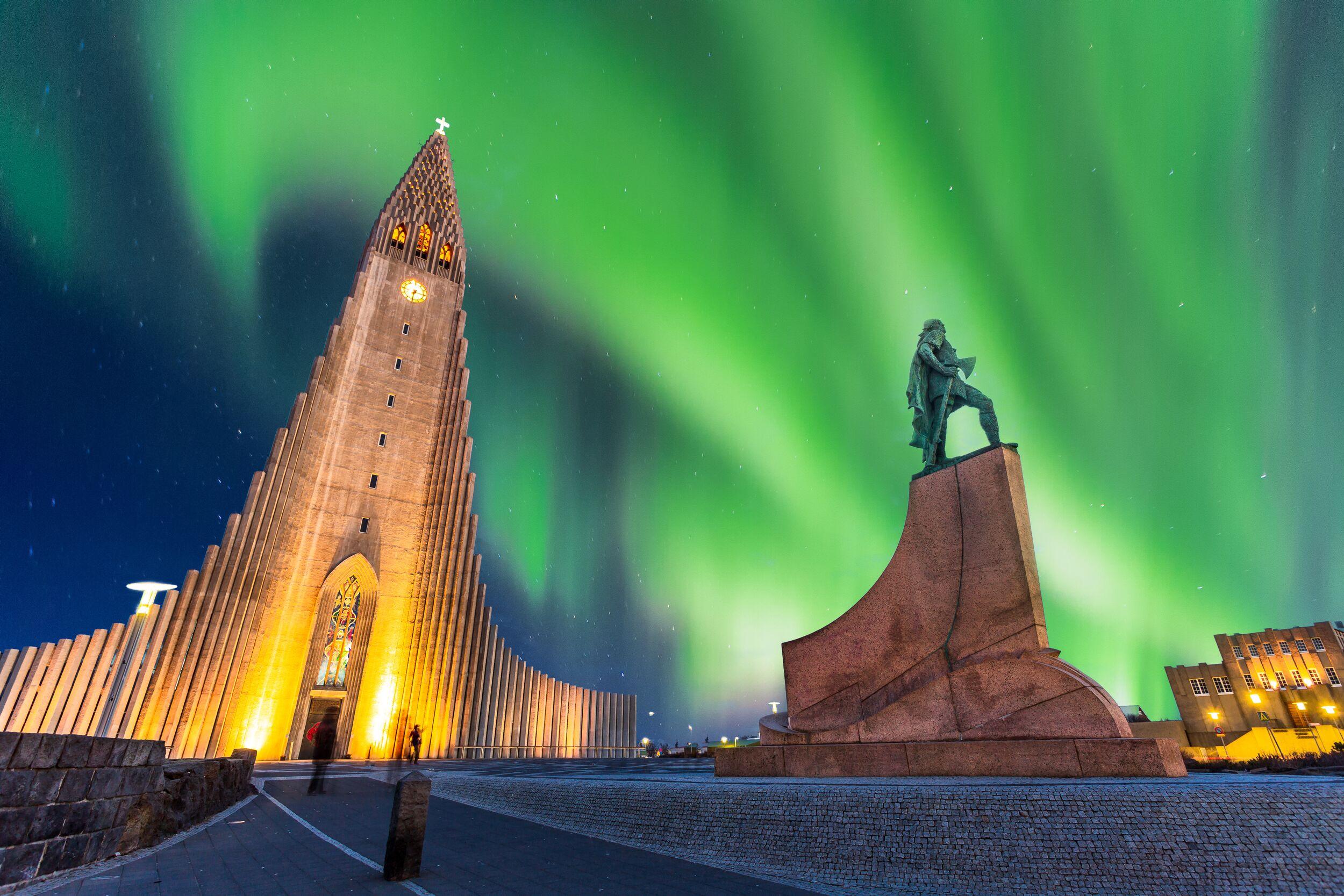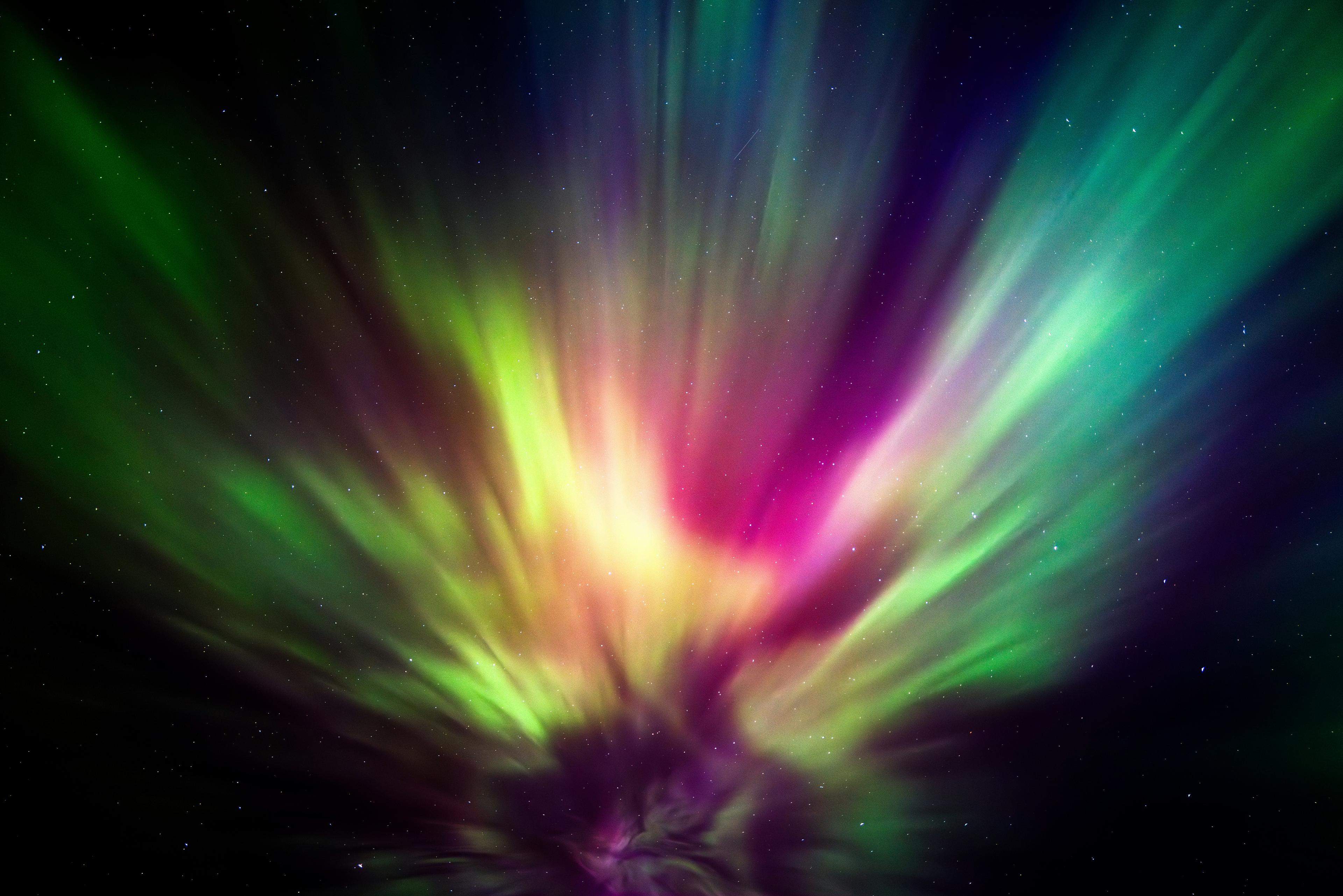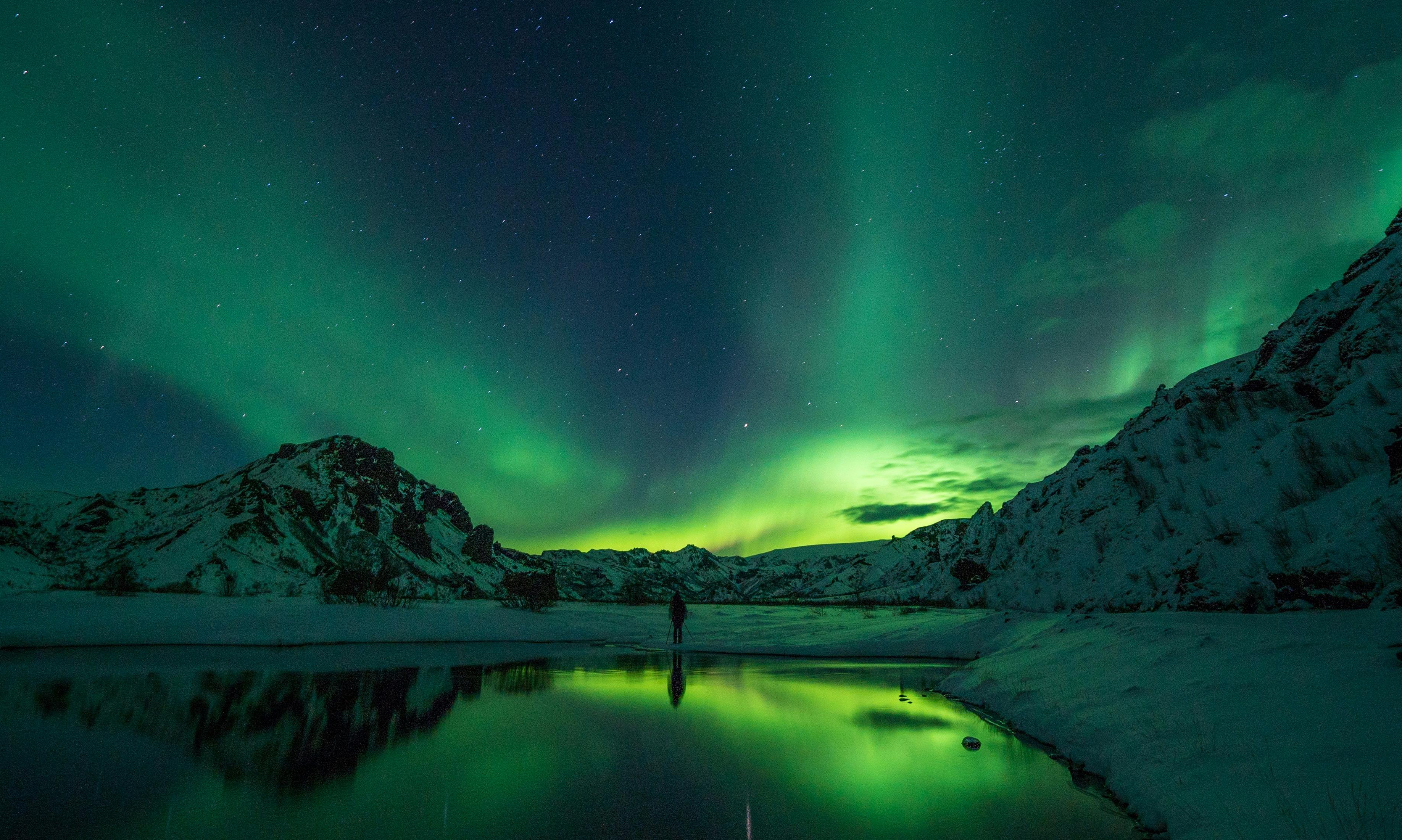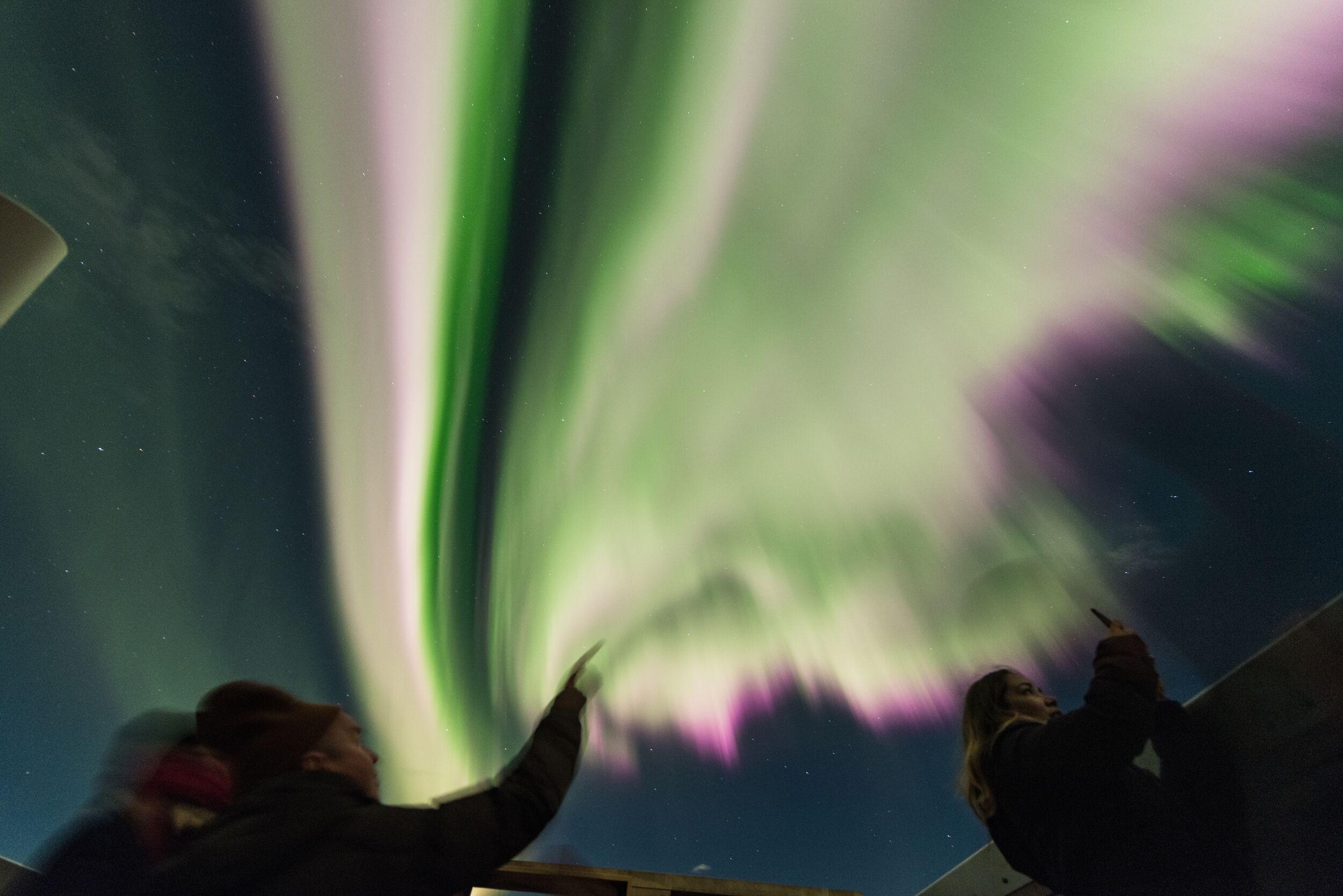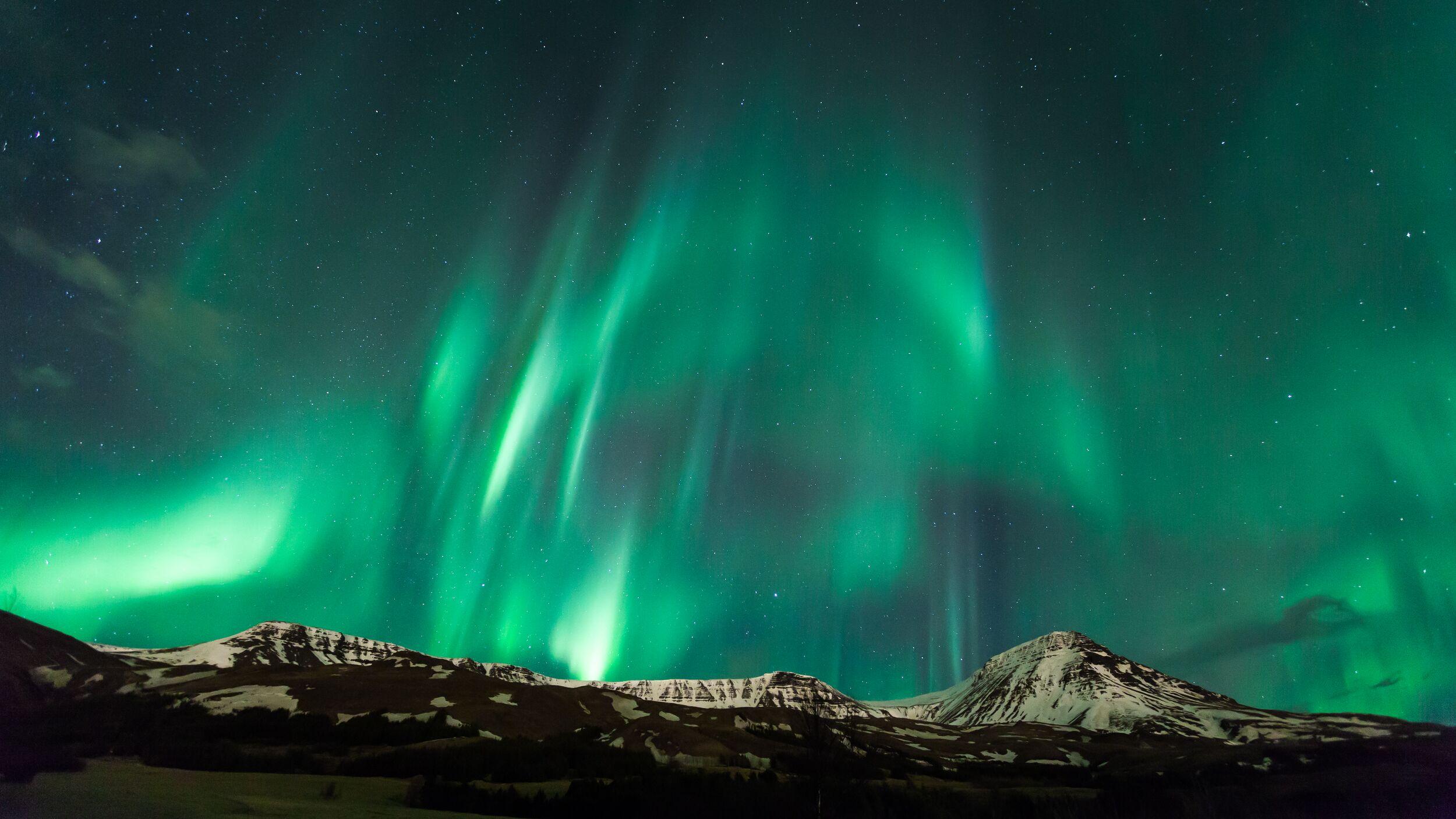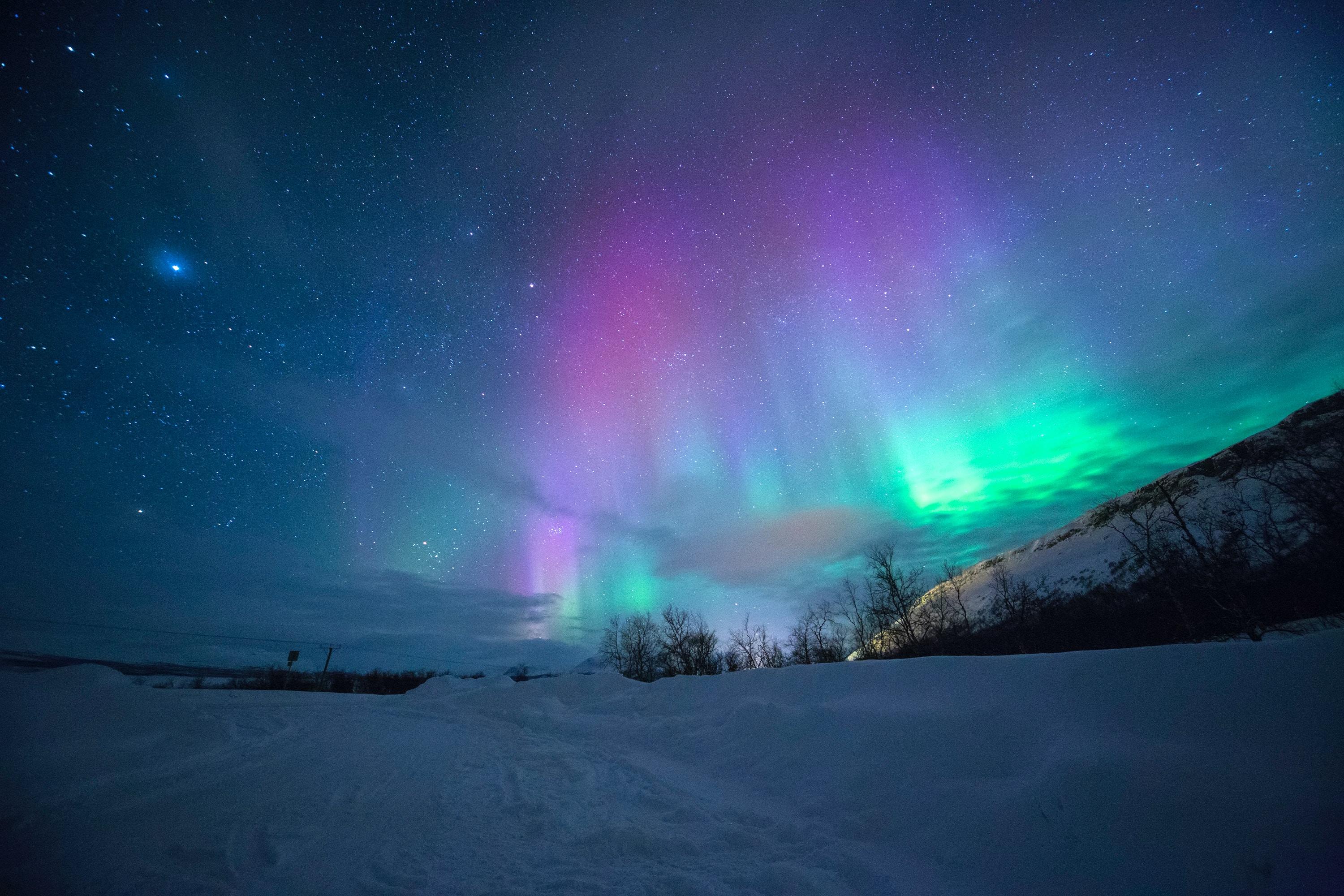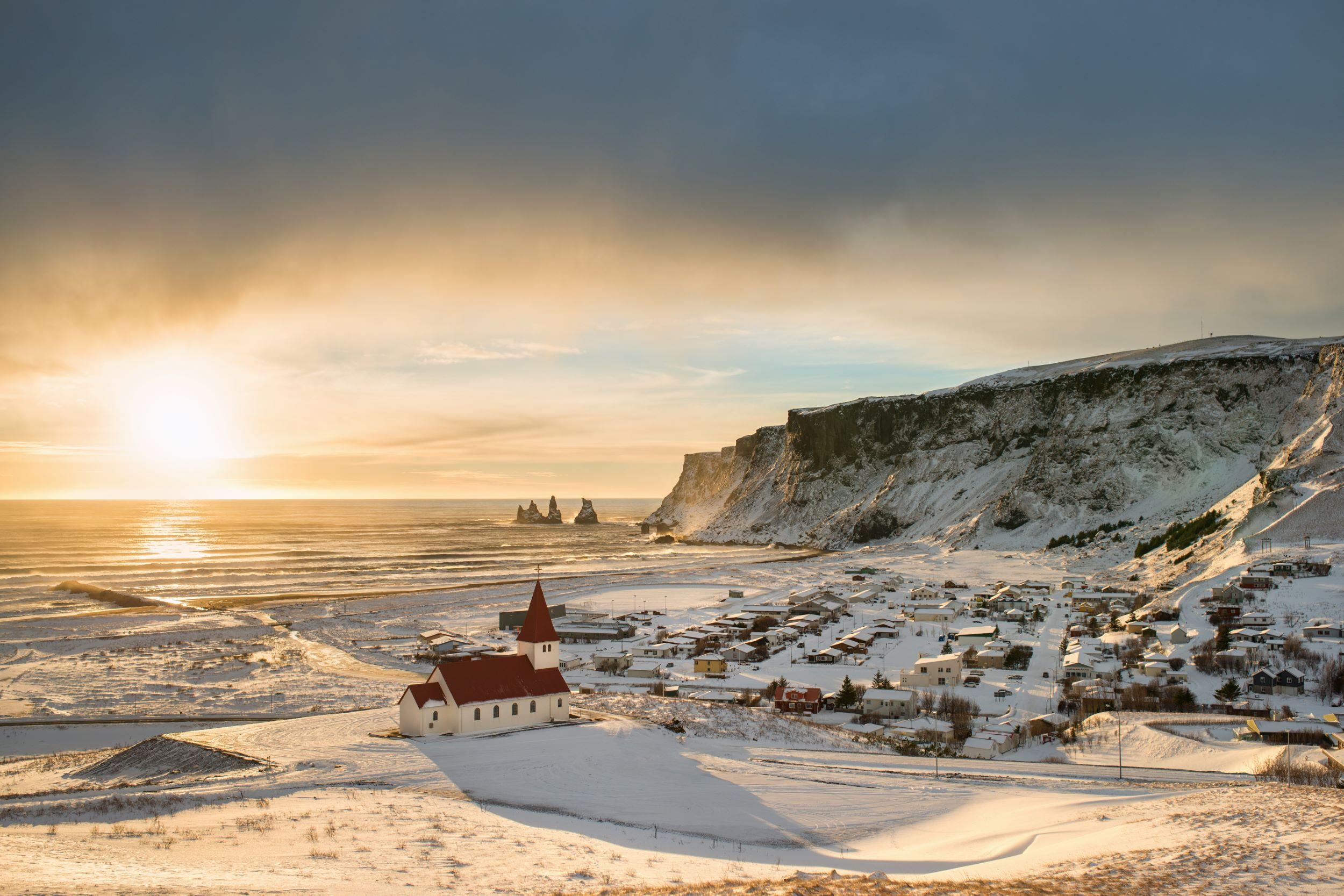Essential Guide to Successful Northern Lights Viewing in Iceland
Table of Contents
Imagine a dance of ethereal colours in the night sky, a mesmerising light show orchestrated by nature itself. This is the Aurora Borealis or the Northern Lights. Witnessing this phenomenon is an experience that resonates deeply, connecting us to the vastness and mystery of our universe.
The allure of the Northern Lights lies in their elusive nature. This is not an everyday occurrence - not even in Iceland - but a special performance requiring specific conditions. The anticipation of seeing the Northern Lights adds an element of excitement and wonder to any adventure. It's a bucket-list experience for many, drawing travellers from all corners of the world, eager to witness this unique display.
This guide aims to equip you with the knowledge, tips, and insights needed to maximise your chances of witnessing the Northern Lights in all their glory. From understanding the science behind the auroras to choosing the best time and place for viewing, this guide is your companion on a journey to one of the most breathtaking sights you'll ever witness.
Tales and Legends Around the Auroras
For thousands of years, the Northern Lights have fascinated people worldwide, from ancient cave painters in France to Vikings and indigenous cultures in Norway and the United States. These stunning celestial displays have been a source of wonder and the inspiration for numerous myths and interpretations.
Across cultures, they were viewed as supernatural, otherworldly phenomena. Ancient humans saw them as omens, messages from the afterlife, or the work of divine beings.
Learn more about the mystical tales and legends behind the Northern Lights in this article.
The Scientific History
Modern understanding of the phenomena evolved through centuries of curiosity and study. From early observations in Babylon and China to Greek and Roman theories, the auroras have long intrigued thinkers. The Renaissance marked a shift towards scientific exploration, with Galileo naming the phenomenon 'aurora borealis.'
The Enlightenment era's geomagnetic studies furthered this understanding, leading to the 20th-century theory of solar particles interacting with Earth's magnetic field, a concept solidified by space exploration. Today's knowledge of the Northern Lights culminates this extensive historical journey, blending ancient wonder with scientific discovery.
The Scientific Explanation behind the Northern Lights
The Aurora's magic originates from the Sun, a vibrant entity composed of hydrogen and helium, where immense energy churns like a bubbling cauldron. On its surface, temperatures hit about 5,500 degrees Celsius or nearly 10,000 Fahrenheit, rising to several million degrees deeper inside. This heat drives nuclear fusion, converting hydrogen into helium, and releases energy that creates electric fields and magnetic activity across the Sun.
This activity forms sunspots and dark areas, indicating potential solar storms. During these storms, hot plasma is ejected, propelling billions of tons of charged matter through space at incredible speeds. Reaching Earth in about 18 hours, these particles interact with Earth's magnetic field, which channels them towards the poles.
If Earth didn't have its magnetic fields, the consequences of such a storm could be catastrophic. However, our planet is equipped with a protective shield that deflects the majority of these solar particles.
At last, we come to the actual formation of the ethereal lights: as the Sun's particles enter Earth's atmosphere, they collide and interact with gas atoms. This interaction causes the emission of energy and light, resulting in what we perceive as the spectacular multi-coloured light show in the night sky.
In this article, you can read a more detailed explanation of this fascinating process.
Solar Activity and Its Impact on the Northern Lights
The intensity and frequency of the Northern Lights are heavily influenced by the Sun's activity, which follows an approximately 11-year cycle known as the solar cycle. During periods of high solar activity, known as the solar maximum, the Sun emits more solar flares and coronal mass ejections (CMEs). These events release vast amounts of solar particles and electromagnetic energy into space, significantly increasing the intensity of the solar wind.
When these enhanced solar winds reach Earth, they can create more intense and frequent auroral displays. The increased number of charged particles colliding with the Earth's atmosphere makes the Northern Lights appear brighter and more dynamic. Conversely, during the solar minimum, the period of lower solar activity, the auroras are less frequent and may appear fainter.
In 2024/25, we are hitting the peak of the solar cycle, which suggests an outstanding Northern Lights season ahead. After reaching its peak, the sun's activity will begin to decrease. However, this does not mean the Northern Lights will be obscured; it only means they may become less frequent and less intense. Nevertheless, there will certainly be opportunities to witness them anytime during the solar cycle.
Read about the 2024/25 winter season predictions in this article.
The Ideal Conditions to See the Northern Lights
Iceland’s Prime Location in the The Auroral Zone
Iceland, nestled in the Auroral Zone, is renowned as one of the world's premier locations for witnessing the Aurora Borealis. The Auroral Zone is a ring-shaped region around the magnetic poles at high latitudes. In this zone, geomagnetic storms, the drivers of auroral activity, predominantly occur.
The intensity and location of the Northern Lights are closely linked to the strength of geomagnetic storms, measured by the so-called "Kp index". This index ranges from 0 (minimal activity) to 9 (high activity). Generally, a higher Kp index means that the Northern Lights can be seen further south. For instance, typical geomagnetic storms range between Kp1 and Kp3, making the Northern Lights visible at latitudes around 66°N to 69°N, which covers the whole of Iceland.
Iceland's position directly within the Auroral Zone is a significant advantage. This means that even when geomagnetic activity is low (for example, a Kp rating of 0), there's still a chance to witness the Northern Lights. A Kp0 rating doesn't imply no activity but rather minimal activity, which can still lead to faint auroral displays.
Iceland's location within this active auroral region allows for more frequent and often more intense sightings of the Northern Lights. The country's high latitude means it is ideally situated to observe these lights, often visible for more than half of the year. This extended viewing season is one of the reasons why Iceland is such a sought-after destination for aurora enthusiasts.
High Solar Activity
Solar activity plays a critical role in the visibility of the Aurora Borealis. The Sun's activity, which includes solar flares and coronal mass ejections, releases charged particles into space. When these particles reach Earth, they contribute to the intensity of the Northern Lights.
While predicting solar activity with absolute precision is challenging, leveraging weather forecasts and aurora prediction tools can significantly enhance the chances of witnessing the Northern Lights. These resources offer invaluable insights into potential solar activity, helping enthusiasts plan their aurora hunting expeditions more effectively.
Importance of a Dark Sky
To fully appreciate the Northern Lights, a dark sky is essential. The phenomenon occurs due to charged particles, and the reaction occurs regardless of the time of the day. However, daylight, particularly direct sunlight, makes these lights invisible.
Similarly, nights with a full moon or excessive artificial light pollution can diminish the visibility of the auroras. Far from city lights, remote locations offer a better chance of experiencing this natural spectacle in its full glory. The contrast provided by dark surroundings accentuates the vibrancy and detail of the auroral display.
The Need for Clear Skies
Clear skies are another crucial factor. While the Northern Lights might be active, cloud cover can obscure the view as the lights occur at much higher altitudes than where clouds form.
Light cloud cover may not significantly impact visibility, but heavy clouds can completely hide the auroras. Many aurora forecasting applications include cloud cover predictions, assisting in selecting the best nights and locations for aurora viewing. Checking these forecasts can prevent disappointment and optimize the chances of a successful sighting.
Choosing a Suitable Viewing Point
Location is not just about geographical position; it also involves selecting a safe and effective viewpoint. Ideal viewing spots are typically on flat ground at a higher elevation, with an unobstructed view of the sky. Sometimes, the auroras appear low on the horizon, so mountains or tall structures can block the view. A wide, open sky view is preferable for an immersive experience.
Safety is paramount in Northern Lights hunting. It's crucial to avoid stopping on roadsides at night, as this can be dangerous and often illegal. Always find a designated parking area or viewpoint.
Best Locations for the Northern Lights in Iceland
In the quest to witness the Northern Lights in Iceland, the specific location is less crucial than one might think. The key lies in finding areas away from light pollution with a clear, unobstructed view of the sky.
Light pollution significantly affects the visibility of the Northern Lights. The bright lights from cities and towns can overpower the subtle glow of the auroras, making them difficult, if not impossible, to see. Therefore, stepping away from urban areas and into more remote, dark locations is essential for a clear view of this celestial phenomenon.
Northern Lights tours in Iceland don't adhere to fixed locations. Instead, Aurora experts closely monitor cloud cover forecasts daily to determine the best viewing spots. When the Northern Lights are active, and the sky is clear, they can be visible almost anywhere in Iceland, offering a dark and cloudless sky. This flexibility means that on any given night, the best spot to view the auroras could be anywhere from a secluded countryside location to a spot just outside a town or city.
There are occasions when the Northern Lights are so intense that they become visible even from within city limits. However, this is not always the case. More often, the auroras might be visible from outside the city but remain unseen within urban areas due to the overpowering city lights. The contrast between the natural luminosity of the auroras and artificial urban lighting means that even when the auroras are active, city dwellers might miss out on the spectacle.
Timing Your Visit: Best Months for Northern Lights in Iceland
Planning a visit to Iceland for the Northern Lights involves timing your trip to align with the optimal conditions for aurora viewing. Generally, the best months to witness the Northern Lights in Iceland are from late August to early April.
This period offers the advantage of longer nights, which are essential for observing the auroras. The peak winter months, particularly from November to February, present the longest nights, but they also come with the challenge of Iceland's more severe weather, including storms and heavy cloud cover.
The transitional months of September and March are often considered ideal. These months provide a balance of sufficiently long and dark nights with relatively milder weather compared to the deep winter months. During these times, the skies are often clearer, increasing the likelihood of uninterrupted views of the Northern Lights.
But these just statistics, while informative, don't rule out the possibility of fortunate weather conditions during December or January, when the nights are significantly longer than in early September or late March. The advantages of the darkest winter months, from November to February, include not having to stay up late for a Northern Lights hunt and the possibility of witnessing them in the morning as well.
Interpreting Aurora and Weather Forecasts
Interpreting aurora forecasts requires an understanding of key indicators like the Kp index and solar wind data. A higher Kp index generally indicates stronger geomagnetic activity and, therefore, a higher likelihood of auroral displays. However, it's essential to consider local weather conditions, especially cloud cover, as clear skies are crucial for visibility.
Weather forecasts play a crucial role in planning your aurora viewing. They can help you determine the best nights for potential sightings based on cloud cover and weather patterns. Combining this information with Aurora forecasts increases your chances of a successful viewing experience.
The Most Reliable Northern Lights Forecast Tools in Iceland
NOAA’S OVATION Map: The Oval Variation, Assessment, Tracking, Intensity, and Online Nowcasting (OVATION) Map provided by NOAA offers real-time monitoring of auroral movements. It presents a 30-minute prediction for auroral activity in both the Northern and Southern hemispheres. When the OVATION Map displays broad swaths of light yellow, orange, or red, it indicates strong auroral potential. A light green hue signals a lesser likelihood of aurora sighting, whereas areas in yellow, orange, and red signify a high probability of observing the Northern Lights.
Icelandic Met Office: Among the various aurora tracking resources, the Icelandic Meteorological Office is the most used in Iceland. Their platform offers a forecast that measures geomagnetic disturbances (Kp-index), which extends from 0 to 9. A rating of 0 means minimal geomagnetic activity, and 9 suggests an intense geomagnetic storm.
A higher geomagnetic activity index (Kp number) means better opportunities to experience the captivating Aurora Borealis. Typically, the scale seldom exceeds 8, but it's advisable to look out for the auroras even at lower Kp-index values. In combination with the cloud cover predictions, this map is instrumental in pinpointing the optimal moments to view the Northern Lights in Iceland.
The site also provides a cloud forecast, which is crucial for aurora watchers as the Northern Lights shine at their best when the sky is dark and partly clear. The map of Iceland above retrieved from the Icelandic Met Office displays the current cloud cover forecast. White colour marks areas with a clear sky, whereas the areas in green are cloudy. Even if the area is light green, your hunt can still be successful if the aurora is active. Another option is to search for the gap in the clouds.
Hello Aurora App: Hello Aurora is a dedicated Northern Lights tracking app designed to simplify the aurora viewing experience. Aside from being a great Aurora Forecast tool, its standout feature is the ability for users to pin their aurora sightings on a live map. Plus, you'll receive notifications when someone spots the Northern Lights, including their exact location.
The Challenges of Aurora Forecasting
Be aware that the Aurora Borealis forecast in Iceland doesn’t give absolute certainty about where and when the Northern Lights might appear, as natural phenomena are entirely out of our control.
Forecasting the Northern Lights is a complex task due to the inherently unpredictable nature of solar activity. The Sun undergoes cycles of calm and intense activity, releasing solar flares and coronal mass ejections that influence the Northern Lights.
The solar wind, a stream of charged particles from the Sun, interacts with Earth's magnetosphere, affecting the visibility of the auroras. The speed of the solar wind is a key factor; faster solar winds usually result in more spectacular auroral displays. Satellites like the Advanced Composition Explorer (ACE) provide real-time monitoring of these conditions, aiding scientists in making forecasts.
However, even with this technology, predicting the Northern Lights remains an inexact science. The time it takes for satellite data to reach Earth and the rapidly changing conditions in space and our atmosphere mean that forecasts can quickly become outdated. Additionally, Earth's magnetic field and atmospheric conditions play significant roles in the intensity and location of the auroras.
Maximizing Your Chances of Witnessing the Aurora Borealis in Iceland
In summary, when it comes to successful Aurora viewing, your best bet is to be in Iceland during the prime seasons of autumn, winter, or early spring. The key factors contributing to a fruitful Northern Lights hunt include location, timing, weather conditions, and solar activity. However, even with these elements in place, a bit of luck is always part of the equation.
Why Consider a Guided Aurora Tour?
Local expertise is invaluable when chasing the elusive Aurora Borealis. Here’s why:
- Forecast Expertise: Local guides have a deep understanding of interpreting Northern Lights forecasts. They monitor solar activity and weather conditions meticulously to predict the appearance of the aurora accurately.
- Optimal Location: Guides know the best spots away from city lights, offering clearer views of the sky. They're familiar with the landscape and can navigate to these prime locations swiftly and safely.
- Safety First: The unpredictable Icelandic weather can be a challenge. Guided tours ensure that you embark on your Aurora hunting adventure with safety as a top priority.
- Educational and Entertaining: Tours are not just about the sighting; they're also informative and enjoyable. Guides often share fascinating insights about the science, folklore, and photography of the Northern Lights, making the experience richer.
- Rebooking Opportunities: Many tours offer a free rebooking policy if the aurora doesn't appear on your first try. This no-sighting policy means you can attempt another viewing without additional cost.
While you need Mother Nature on your side for a successful Northern Lights experience, leveraging the expertise of local guides can significantly increase your chances. Not only do they provide you with the best possible opportunity to see the Aurora Borealis, but they also ensure your journey is safe, educational, and entertaining.
Select Your Northern Lights Tour
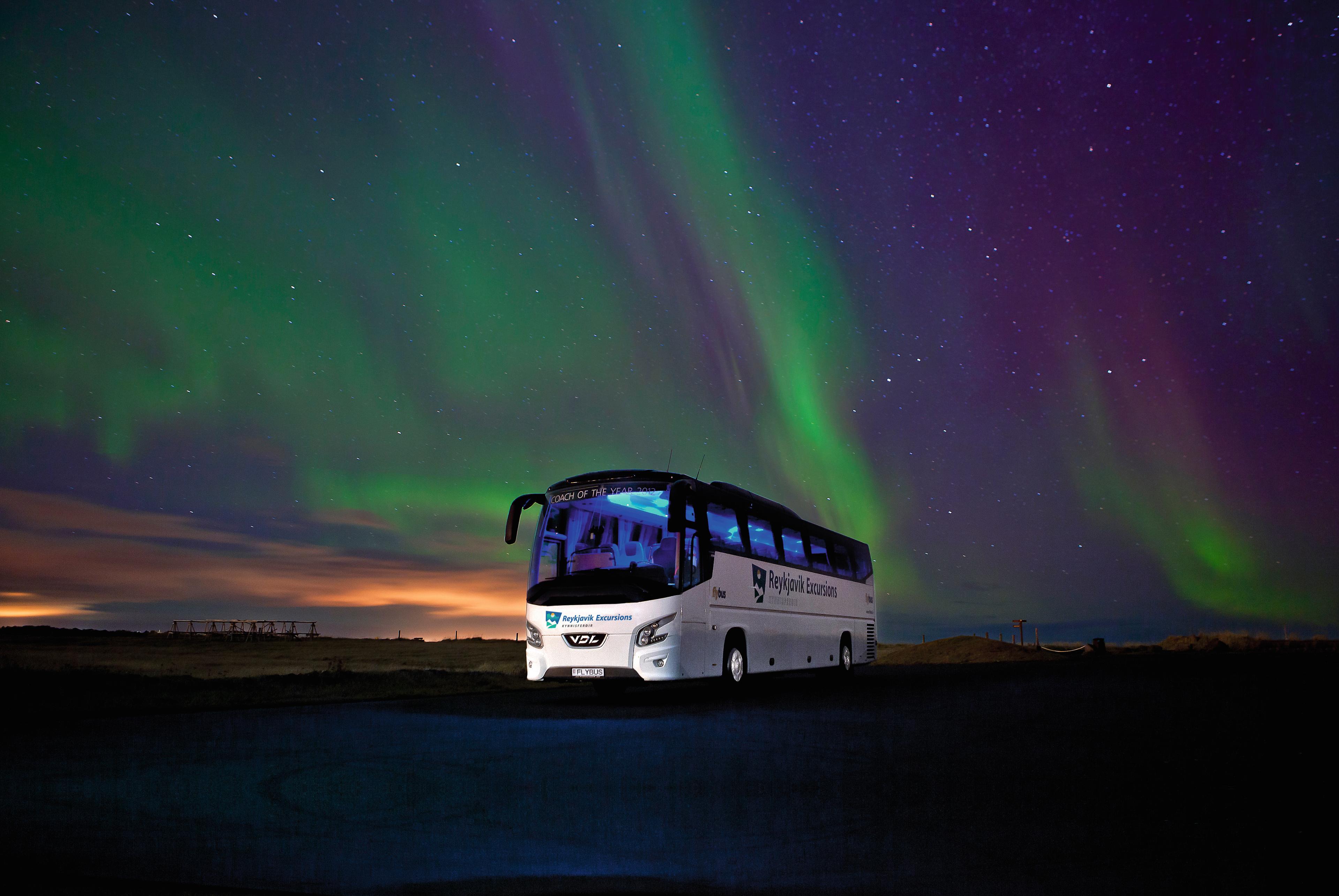
Northern Lights Tour
See the majestic Northern Lights dancing across the sky. If the skies are shy, try again free of charge as many times as you need until you see them! Learn about the phenomenon by visiting the Aurora Centre - Northern Lights Exhibition in Reykjavík; admission is included in this tour!
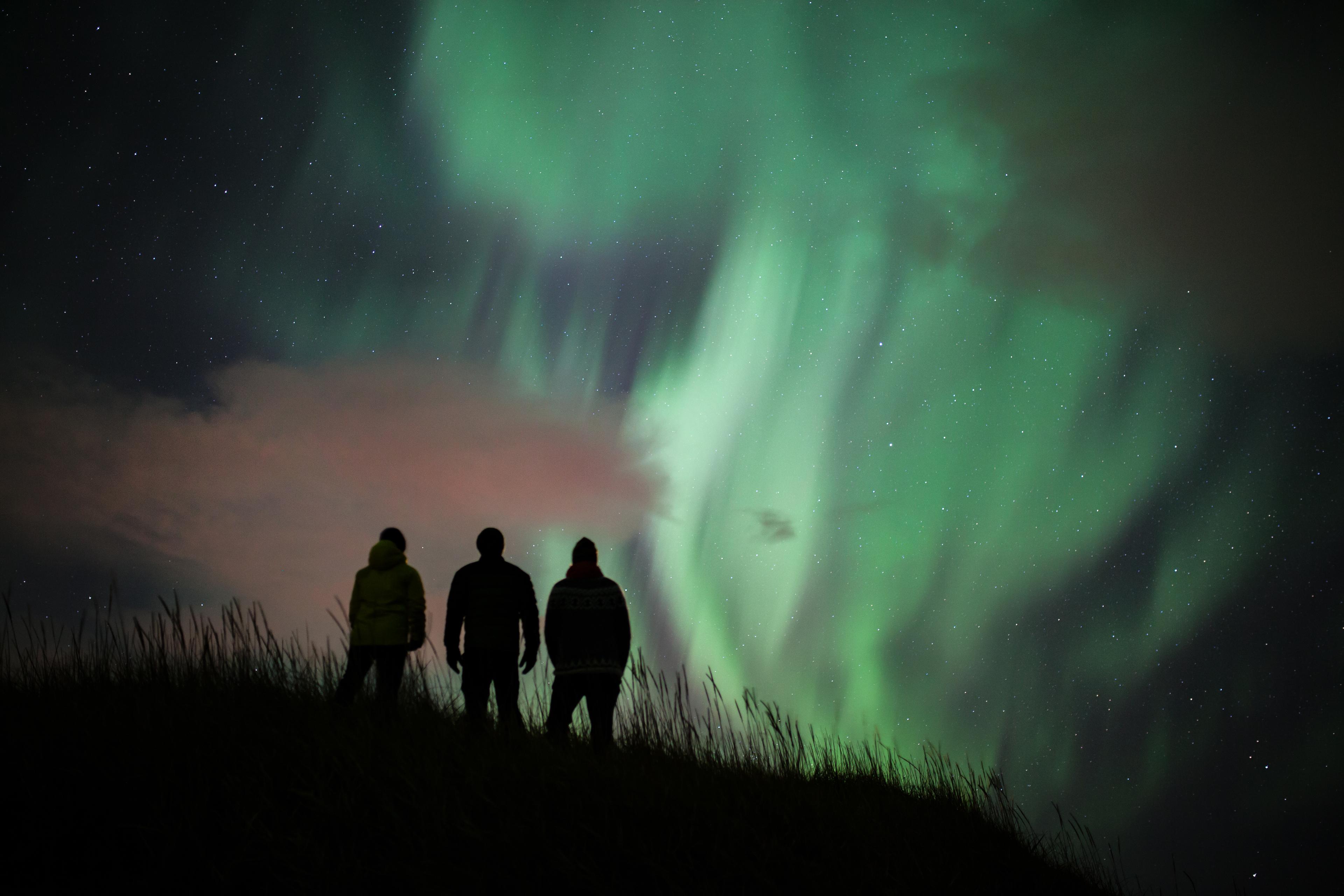
Northern Lights - Small Group Tour
Catch the stunning Northern Lights in the sky, and if they're shy, rebook for free until they show. Included admission to the Aurora Centre's Northern Lights Exhibition on the tour date. The small group size ensures an intimate experience and personalized attention from your expert guide.
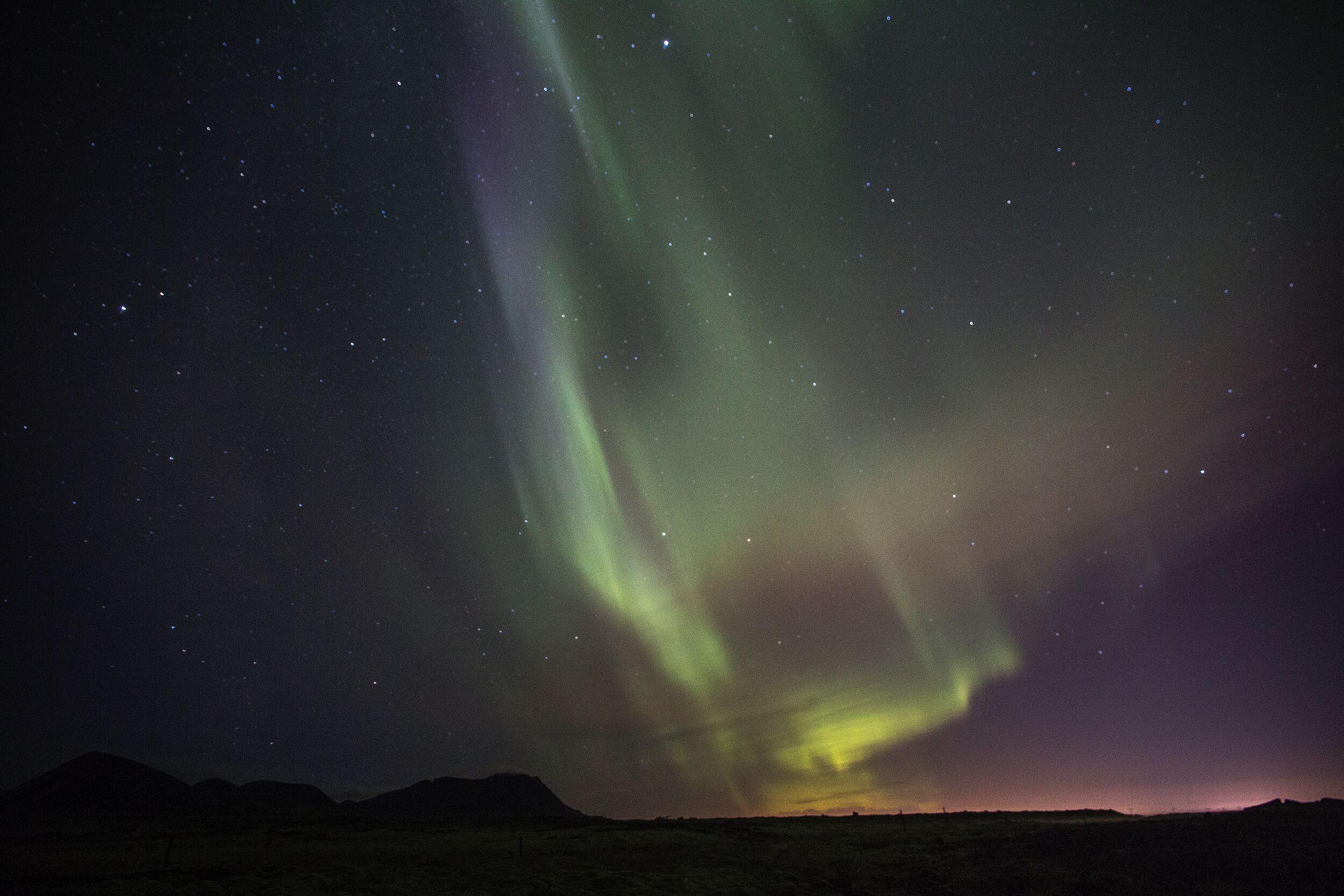
The Golden Circle & Northern Lights - Combo Deal
Want to see the sites of the Golden Circle and hunt for the northern lights but have a limited amount of time? Consider this express Golden Circle/Northern Lights tour! Experience the landmarks of the classic Golden Circle in South Iceland on this unforgettable day tour. The Golden Circle encompasses the must-see sights of Thingvellir National Park, the golden Gullfoss waterfall, and the bubbling geothermal region of Geysir. After your return to Reykjavík, a guide will lead you on a search for the elusive northern lights!
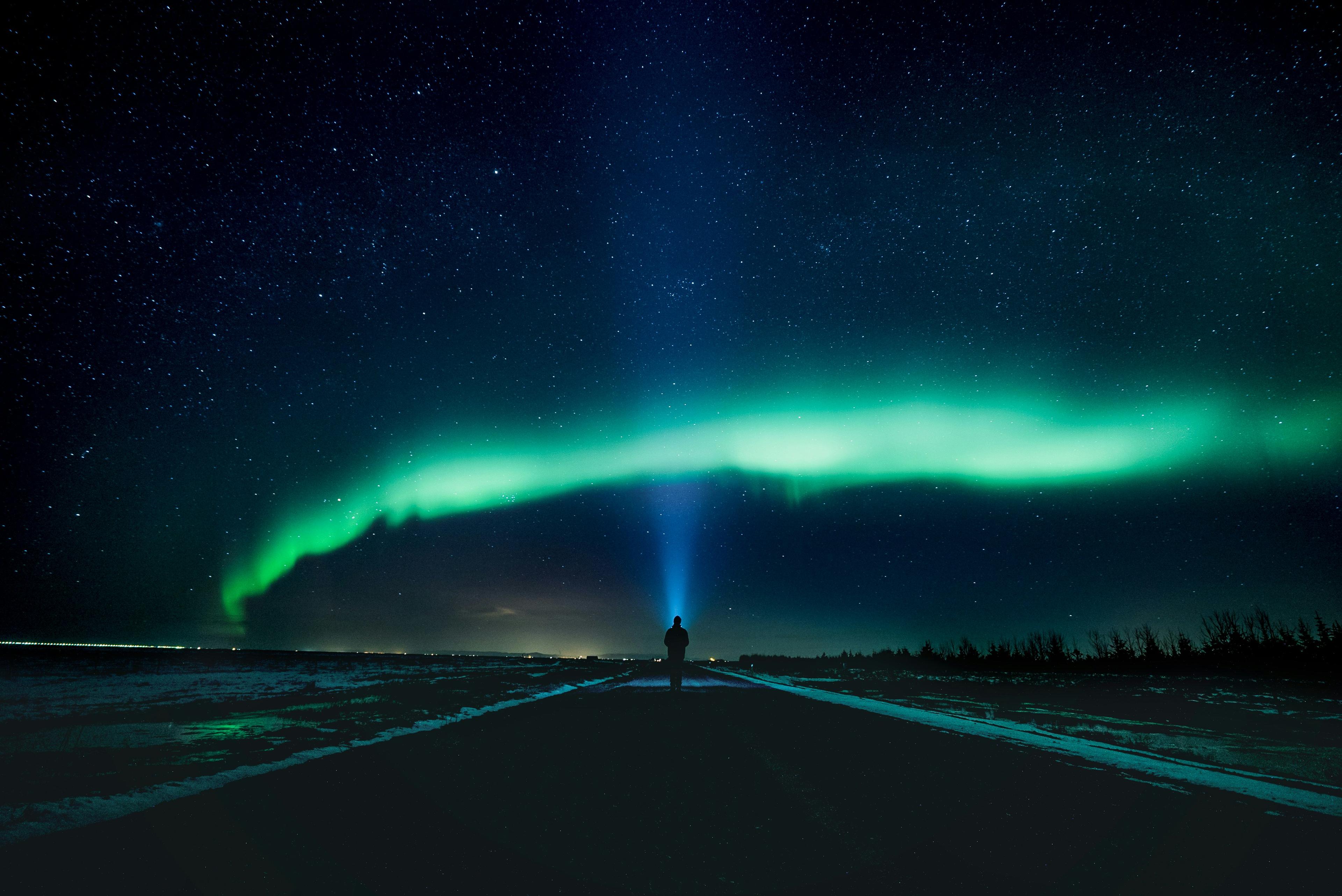
Northern Lights Explorer – Super Jeep Tour
Embark on an unforgettable Northern Lights adventure from Reykjavík in a specially modified Super jeep designed to explore off-the-beaten-path locations. Escape the crowds and experience the breathtaking Aurora in the remote Icelandic wilderness.

The Golden Circle & Northern Lights - Combo Deal
Want to see the sites of the Golden Circle and hunt for the northern lights but have a limited amount of time? Consider this express Golden Circle/Northern Lights tour! Experience the landmarks of the classic Golden Circle in South Iceland on this unforgettable day tour. The Golden Circle encompasses the must-see sights of Thingvellir National Park, the golden Gullfoss waterfall, and the bubbling geothermal region of Geysir. After your return to Reykjavík, a guide will lead you on a search for the elusive northern lights!
Join "The Auroras"
Join the exclusive club of Alliance of Ultra Reliable Observers Ready for Aurora Spotting or the AURORAS for a chance to win a Northern Lights trip to Iceland!

Questions and Answers about Northern Lights in Iceland
Almost any camera phone these days is powerful enough to take decent pictures of the Northern Lights. In fact, many phone cameras are actually better than proper cameras!
To take a good photo, turn your exposure to the maximum, turn off the flash, and use night mode. Apps such as Nightcap, Cortex Camera, or the Northern Lights Photo Taker can help too.
The rarest colours of the Northern Lights are blue and red. Blue auroras are produced by nitrogen molecules at lower altitudes and are less common. Red auroras, occurring at the highest altitudes and caused by high-altitude oxygen, are also relatively rare. Both these colours require specific atmospheric conditions to be visible, making them a less frequent but spectacular sight in auroral displays.
The Northern Lights can be seen from Reykjavík, yes. And it’s a magical experience to see them by chance when you’re just enjoying your evening.
However, the city is not the best place to see the Northern Lights. That’s because light pollution can prevent them from appearing with their full strength. Instead, you want somewhere dark to enjoy them at their best.
The Northern Lights are special for a couple of key reasons:
1. Unique Natural Phenomenon: They represent a spectacular natural light display in the Earth's sky, primarily seen in high-latitude regions around the Arctic and Antarctic. This phenomenon results from the interaction between the Earth's magnetic field and charged particles from the sun, making it a unique celestial event.
2. Cultural and Mythological Significance: Throughout history, the Northern Lights have held significant cultural and mythological importance in various societies. They have inspired numerous folklore tales and art and have been a subject of awe and wonder. Their ethereal beauty and the magical experience they provide add to their special status in human perception and experience.
It’s possible to see the Northern Lights in Iceland throughout the winter.
For the Northern Lights to be visible, you need two things: solar activity and a clear, dark sky. The darker the better—that’s why winters in very northern countries like Iceland are the best time to see them.
The darkest months of the year are November, December, and January. However, you can see Northern Lights from September through to April and studies show that the closer you are to the equinoxes, the higher the likelihood of seeing the Northern Lights. Based on that you'd want to place your bet on September/October and March/April.
The scientific processes that cause the Northern Lights occur very often, if not pretty much all the time—throughout the night, day, winter and summer. However, often you can’t see them because of the cloud, the midnight sun, or because you’re not looking.
While every night might be an exaggeration, the Northern Lights are much more common than you might think!
Auroras can last from a few minutes to several hours, depending on the intensity of the geomagnetic storm causing them.
To maximize your chances of seeing the Northern Lights, it's advisable to stay for at least a week. This duration allows for variability in weather conditions and solar activity, which are crucial factors in the visibility of the auroras. Since the Northern Lights are a natural phenomenon and their appearance can be unpredictable, a longer stay increases the likelihood of witnessing this spectacular display, especially considering potential cloudy nights or periods of low solar activity.
Facing north often increases your chances of seeing the Northern Lights, especially in lower-latitude areas. In Iceland, however, the lights are most often right above our heads or stretching across the entire sky.
There’s no way of guaranteeing that you’ll see the Northern Lights. It’s a natural phenomenon that’s affected by the weather, after all. But with Northern Lights tours, you do have a pretty good chance.
In Iceland, December is the month when the days are shortest and nights are darkest which typically makes it a favourite month for Northern Lights-hunting. However, studies show that the closer to the equinoxes you are, all the more likely you are to see northern lights in the northern hemisphere. So, some would prefer September and October or March and April over the darkest months, sacrificing a few hours of darkness for a higher likelihood of lights.
That said, you can have as much luck seeing the aurora borealis in any of the months of the winter. All you need is dark, clear skies.
Exciting studies and anecdotal evidence, ranging from Sami folklore to modern stargazers, suggest that the Northern Lights might produce sounds, a phenomenon as elusive as the lights themselves.
Historically, indigenous peoples and early Arctic explorers reported hearing sounds like crackling and whooshing during auroral displays, though these claims were met with scepticism since auroras occur at altitudes beyond the human ear's acoustic range.
Recent research in Finland, however, has recorded sounds such as claps and crackles coinciding with the auroras at lower altitudes within the human audible range. This emerging theory suggests that the electrical phenomena of auroras, involving charged particles and temperature variations, could generate these sounds akin to the noise produced by a spark.
While not all observers experience these sounds, and they're often heard under specific, quiet conditions, for some, the Northern Lights are not just a visual spectacle but a celestial concert, highlighting the dynamic nature of our planet.
Yes, you can see the Northern Lights in Reykjavik in some cases. However, when the lights are faint or low on the horizon, their visibility can be significantly reduced by the city lights and obstructed by buildings. For the best viewing experience, it's recommended to find spots away from the urban light pollution and with an unobstructed view of the sky.
It’s not at all rare to see the Northern Lights in Iceland! That’s why so many people come to the Land of Ice and Fire to enjoy the display.
In fact, you can see the aurora borealis almost every night if the skies are clear. You just need to know where to look!
The best way to increase your chances of seeing the Northern Lights is to join a tour. While you can sometimes see the phenomenon by yourself, when you’re led by an expert guide, they’ll be able to show you exactly where to look.
What’s more, if you don’t see the Northern Lights on your tour, we’ll give you a ticket to another tour on a day that suits you for free—to double your chances.
Three interesting facts about the Northern Lights are:
1. The Northern Lights, also known as Aurora Borealis, are caused by the interaction of solar wind - a stream of charged particles escaping the Sun - with Earth's magnetic field and atmosphere.
2. They can exhibit a variety of colours, with green being the most common. These colours result from different gases in the atmosphere getting excited by the solar particles; oxygen emits green and red hues, while nitrogen gives off blue and purple.
3. Although best known for appearing in polar regions, during periods of strong solar activity, the Northern Lights can be seen at lower latitudes, far from the polar areas. This makes them a spectacular and somewhat unpredictable natural light show.
To see the Northern Lights at their best, it’s recommended that you find a place where light pollution is lowest. That’s why the best Northern Lights tours will leave cities such as Reykjavík—because you can see the aurora better where it’s darkest.
That said, you can see the Northern Lights from the city. And as weather conditions and cloud cover change every night, the best place to see the Northern Lights changes too.
Seeing the Northern Lights in Iceland is fairly likely during the winter months if weather conditions are favourable.
The price of Northern Lights tours in Iceland depend on what you want to get up to and how you want to travel.
The most affordable option is the classic tour from Reykjavík, which takes you by coach to a destination where the conditions are best that evening. But if you want to travel by small group, or on a private vehicle, you will pay more.
The same goes for tours that take you to different destinations, such as the Golden Circle or the Blue Lagoon.
Check out individual tour pages for up to date prices.
The Northern Lights do not occur every night; their visibility depends on solar activity and atmospheric conditions.
The Northern Lights are not exclusively in the north; they are mirrored by the Southern Lights (Aurora Australis) in the southern hemisphere, both occurring near the Earth's magnetic poles.
When on a Northern Lights tour, plan to wear clothes that will best keep you warm. You’re going to be outside at night in the Icelandic winter, and to enjoy the experience to the fullest you won’t want to get cold.
The best idea is to wear lots of thin layers, plus a winter jacket and a windproof outer shell. And don’t forget to keep your feet warm! Icelandic woollen socks, for example, can be a good idea.
The best parts of Iceland for Northern Lights are outside urban areas, with the eastern northern and western regions often recommended for clearer skies.
Related Articles
See all articlesRecommended tours

The Golden Circle & Northern Lights - Combo Deal
Want to see the sites of the Golden Circle and hunt for the northern lights but have a limited amount of time? Consider this express Golden Circle/Northern Lights tour! Experience the landmarks of the classic Golden Circle in South Iceland on this unforgettable day tour. The Golden Circle encompasses the must-see sights of Thingvellir National Park, the golden Gullfoss waterfall, and the bubbling geothermal region of Geysir. After your return to Reykjavík, a guide will lead you on a search for the elusive northern lights!

Northern Lights Tour
See the majestic Northern Lights dancing across the sky. If the skies are shy, try again free of charge as many times as you need until you see them! Learn about the phenomenon by visiting the Aurora Centre - Northern Lights Exhibition in Reykjavík; admission is included in this tour!
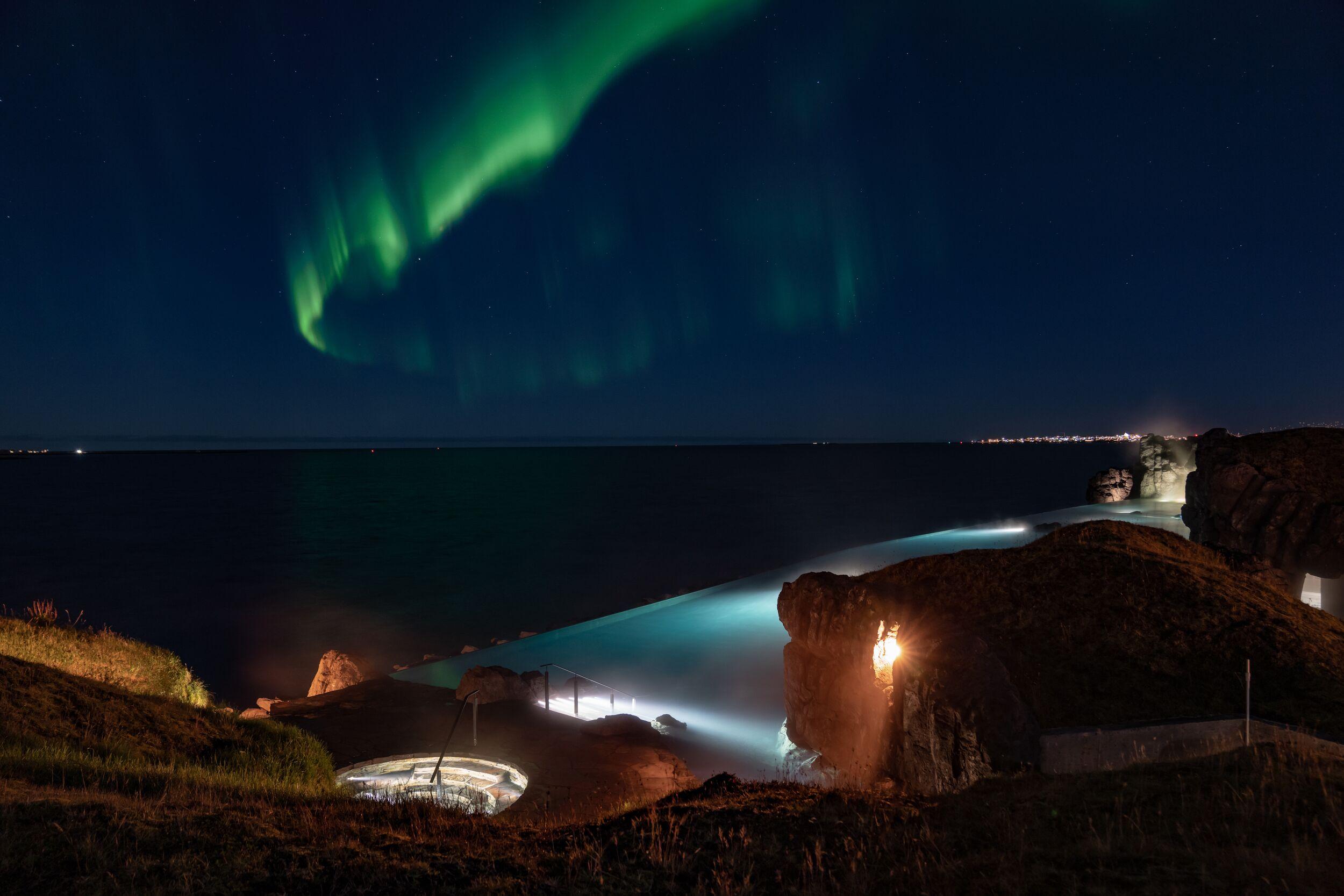
The Sky Lagoon & Northern Lights
Enjoy a relaxing soak in the Sky Lagoon before your adventurous Northern Lights hunt.
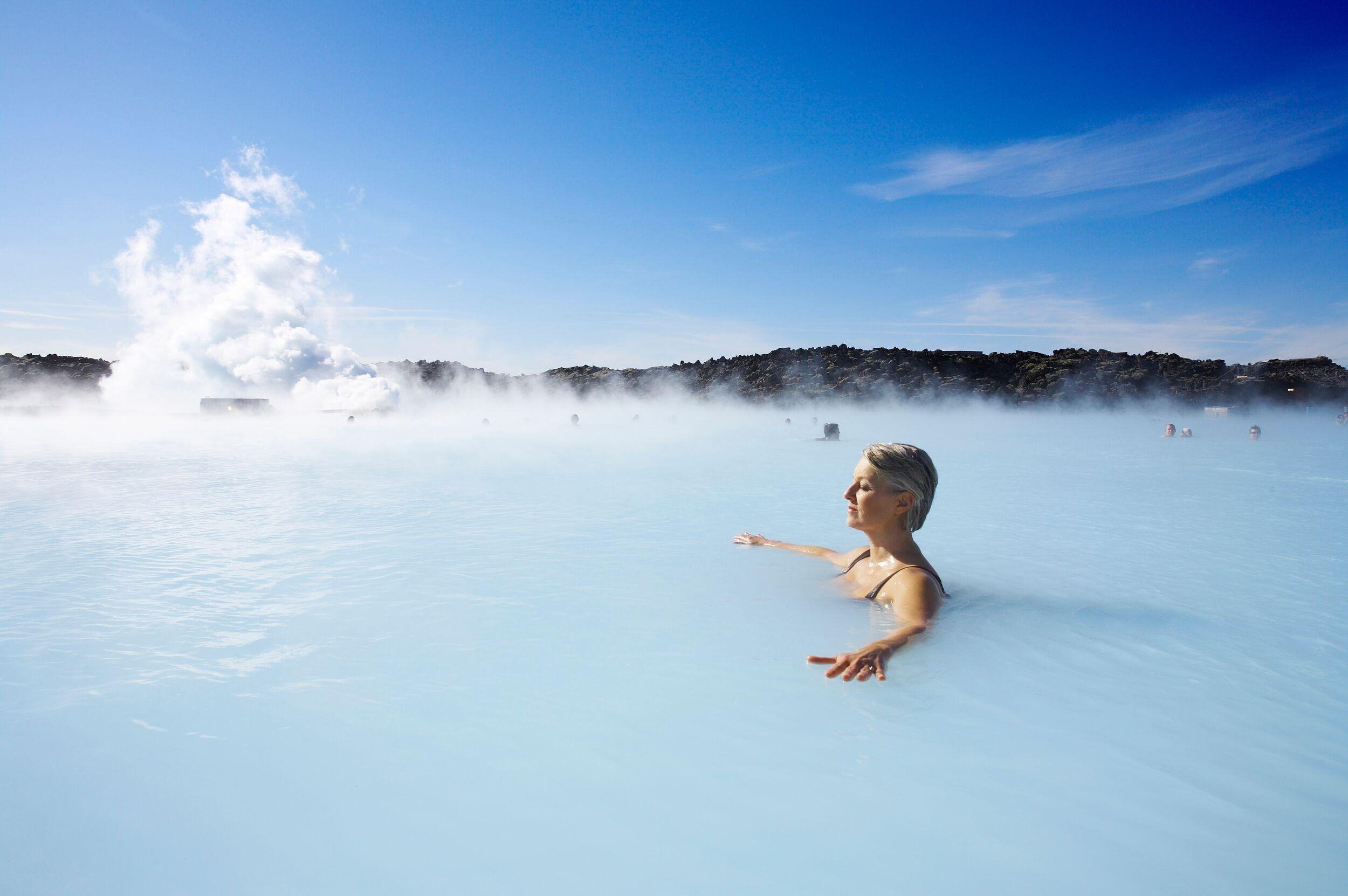
- Best seller
- Popular
Blue Lagoon & Northern Lights
Enjoy a perfect winter day in Iceland! Experience the best of Iceland with this package of two of the island’s most popular tours in one day! Soak in the milky blue healing water of the Blue Lagoon, which is one of Iceland's most famous tourist attractions and is considered by many to be a once-in-a-lifetime experience and an unmissable part of a visit to Iceland. After your return to Reykjavík, a guide will lead you on a search for the elusive northern lights! Watching the lights dance and flicker in the sky, changing shape and colour, is incredible. Prepare to be dazzled!

Northern Lights Explorer – Super Jeep Tour
Embark on an unforgettable Northern Lights adventure from Reykjavík in a specially modified Super jeep designed to explore off-the-beaten-path locations. Escape the crowds and experience the breathtaking Aurora in the remote Icelandic wilderness.

Northern Lights - Small Group Tour
Catch the stunning Northern Lights in the sky, and if they're shy, rebook for free until they show. Included admission to the Aurora Centre's Northern Lights Exhibition on the tour date. The small group size ensures an intimate experience and personalized attention from your expert guide.


